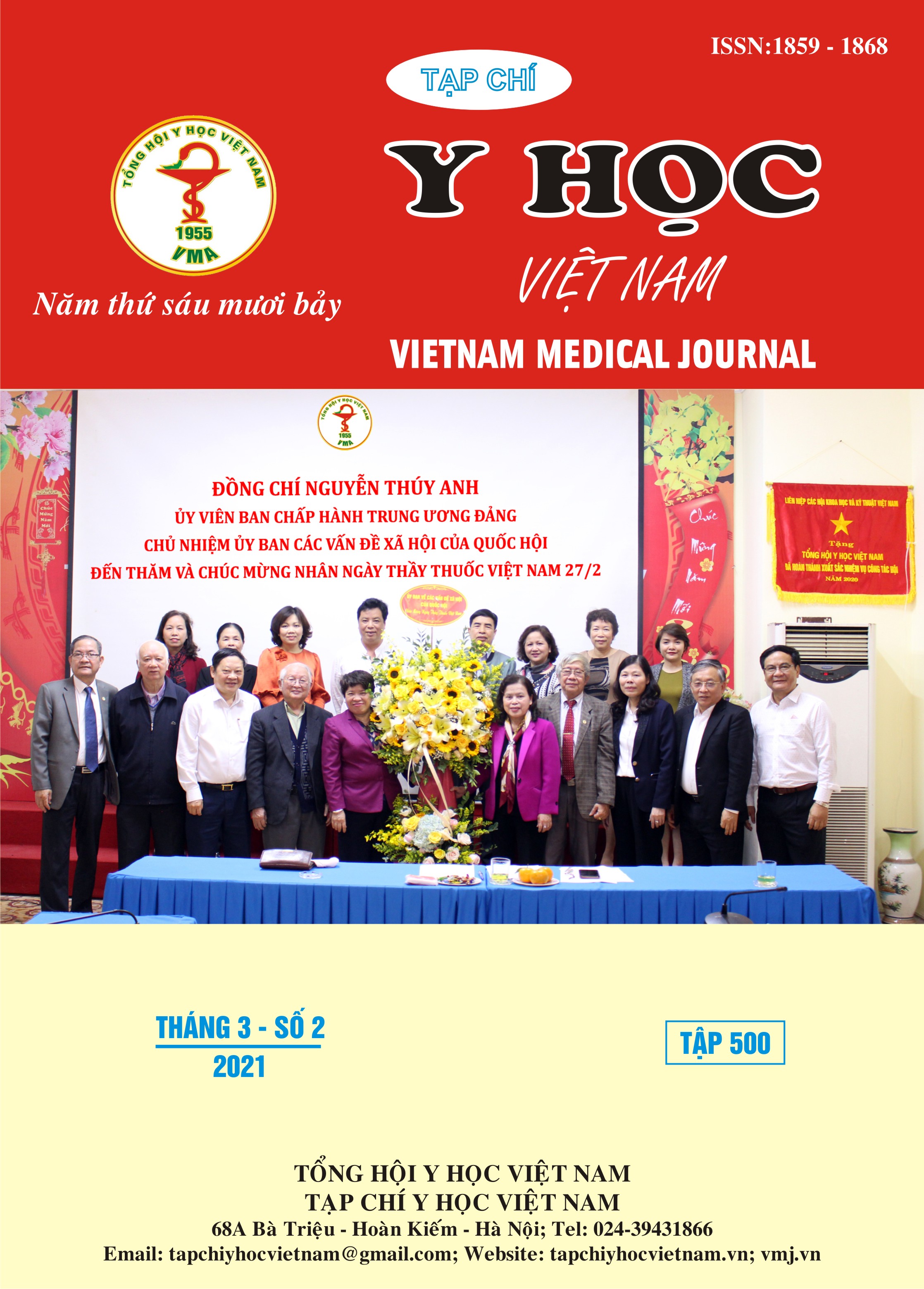RELATIONSHIP BETWEEN MATERNAL KIR2DL5 AND KIR2DS4 GENES WITH PREECLAMPSIA
Main Article Content
Abstract
The pathogenesis of preeclampsia may involve inadequate trophoblast invasion caused by excessive inhibition of decidual natural killer cells (dNK) by extravillous trophoblast cells. Fetomaternal immune tolerance induced by dNK is a necessary phenomenon associated with maternal killer-cell immunoglobulin-like receptors (KIRs) and fetal human leukocyte antigens (HLAs). Objectives: To determine the frequency of two maternal KIR genes KIR2DL5, KIR2DS4 and investigate whether certain combinations with some preeclampsia symptoms. Subjects and methods: A case-control study was conducted in 100 pregnant women with preeclampsia and 100 normal pregnant women. DNA samples were assayed through polymerase chain reaction with sequence-specific primers (PCR - SSP). Results and conclusion: The frequency of the KIR2DL5 gene and KIR2DL5+ KIR2DS4+ genotype was decreased in the preeclampsia group compared with controls (p < 0.05). In the preeclampsia group, the presence of the KIR2DS4 gene made the weight of new-borns decrease (p<0.05), and the quantity of erythrocyte was higher in the KIR2DL5+ KIR2DS4+ group than in the KIR2DL5-KIR2DS4+ group (p<0,05).
Article Details
Keywords
Preeclampsia, KIR, KIR2DL5 gene, KIR2DS4 gene
References
2. Hong Yu, Pan N, Shen Y (2014). Interaction of parental KIR and fetal HLA-C genotypes with the risk of preeclampsia. Hypertension in Pregnancy, 33(4), 402-411.
3. Akbari S, Ahmadi S.A.Y, Shahsavar F (2018). Correlation of maternal KIR and parental HLA-C genes diversity with risk of preeclampsia in Lorestan Province of Iran. International Journal of Women's Health and Reproduction Sciences, 6, 452-45.
4. Hiby SE, Walker J.J, O’shaughnessy K.M et al (2004). Combinations of maternal KIR and fetal HLA-C genes influence the risk of preeclampsia and reproductive success. Journal of Experimental Medicine, 200 (8), 957-965.
5. Nguyễn Thị Phượng (2015). Nghiên cứu một số đặc điểm huyết học ở thai phụ tiến sản giật tại Bệnh viện Phụ sản Trung ương. Luận văn Thạc sỹ y học. Trường Đại Học Y Hà Nội.
6. Lê Thị Mai (2004). Nghiên cứu tình hình sản phụbịnhiễm độc thai nghén đẻ tại bệnh viện Phụ sản Trung ương trong năm 2003. Luận văn Bác sỹ Chuyên khoa II, Trường Đại học Y Hà Nội.
7. Lê Thiện Thái (2010). Nghiên cứu ảnh hưởng của bệnh lý tiền sản giật lên thai phụ và thai nhi và đánh giá hiệu quả của phác đồ điều trị. Luận án Tiến sỹ y học, Trường Đại học Y Hà Nội.


